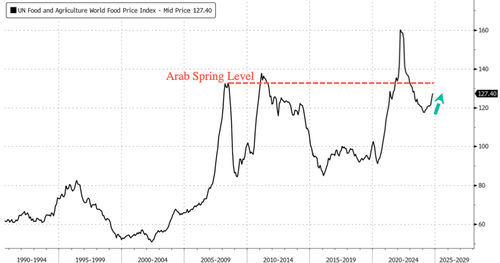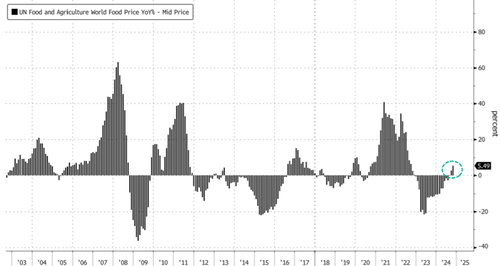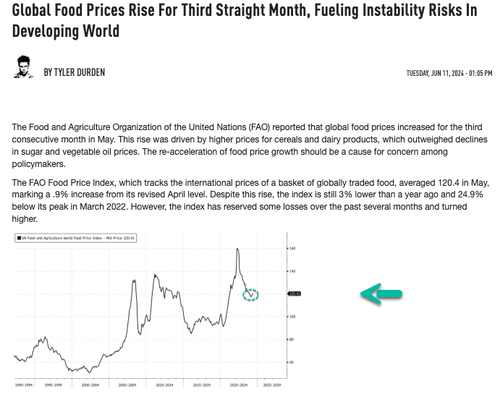The Food and Agriculture Organization of the United Nations' Food Price Index, which tracks the international prices of a basket of globally traded food, averaged 127.4 in October, up 2% from the prior month and 5.5% from one year ago. This index bottomed and turned higher earlier this year after peaking and falling for much of 2022-23.
October's FAO Food Price Index rise is the second consecutive month of year-over-year increases.
The biggest driver of the FAO Food Price Index was the FAO Vegetable Oil Price Index, which spiked 7.3% in October, hitting a two-year high, due to production concerns sending palm, soy, sunflower, and rapeseed oil prices higher.
Here's how the rest of the index components performed in October:
The FAO Cereal Price Index increased by 0.9 percent in October, led by rising wheat and maize export prices. Global wheat prices were affected by unfavorable weather conditions in major northern hemisphere exporters as well as the re-introduction of an unofficial price floor in the Russian Federation and rising tensions in the Black Sea region. World maize prices rose as well, driven in part by strong domestic demand and transport challenges in Brazil due to low river levels. By contrast, the FAO All Rice Price Index declined by 5.6 percent in October, reflecting lower indica rice quotations driven by expectations of heightened competition among exporters following India's removal of export restrictions on non-broken rice.
The FAO Sugar Price Index increased by 2.6 percent amid persisting concerns over the 2024/25 production outlook in Brazil following extended dry weather conditions. Rising international crude oil prices also contributed to the increase in sugar quotations by shifting more sugarcane toward ethanol production, while the weakening of the Brazilian real against the United States dollar limited the increase.
The FAO Dairy Price Index rose by 1.9 percent in October, averaging 21.4 percent above its level the same time last year. The increase was primarily driven by higher international cheese and butter prices, while quotations for milk powders declined.
Bucking the general upward trend, the FAO Meat Price Index dropped by 0.3 percent from September, mainly due to lower pig meat prices resulting from increased slaughter rates in Western Europe amid weak domestic and international demand. World poultry prices fell slightly in October, while those of ovine meat remained stable. By contrast, bovine meat prices increased moderately, underpinned by stronger international purchases.
Readers have been well informed about the rising risks of global food inflation re-accelerating. We said in June...
Then, last month:
Global Food Prices Jump Most In 18 Months As Supermarket Inflation Storm Worsens https://t.co/zJgI3QvqBZ
— zerohedge (@zerohedge) October 4, 2024
Food inflation momentum is moving in the wrong direction - indicating it's very sticky.


